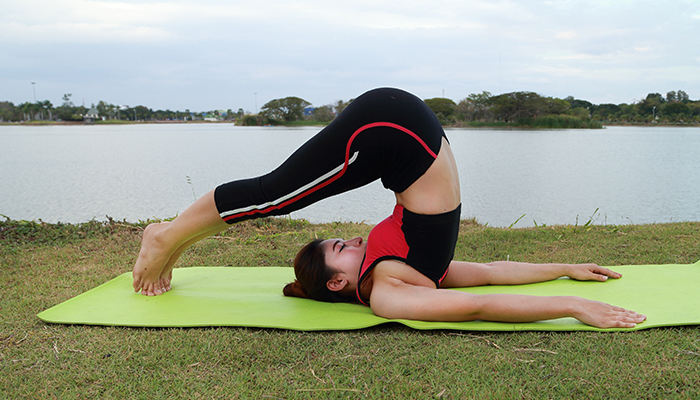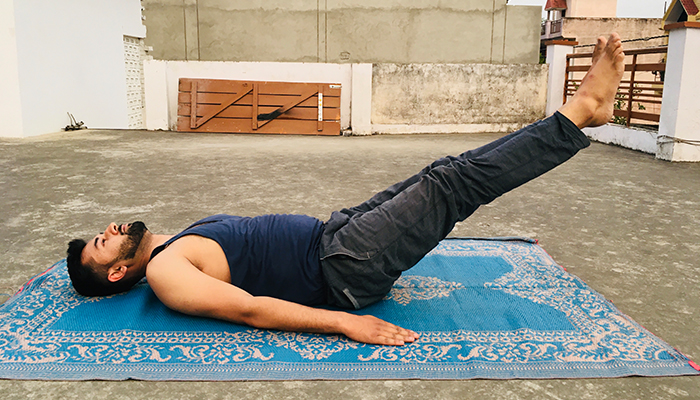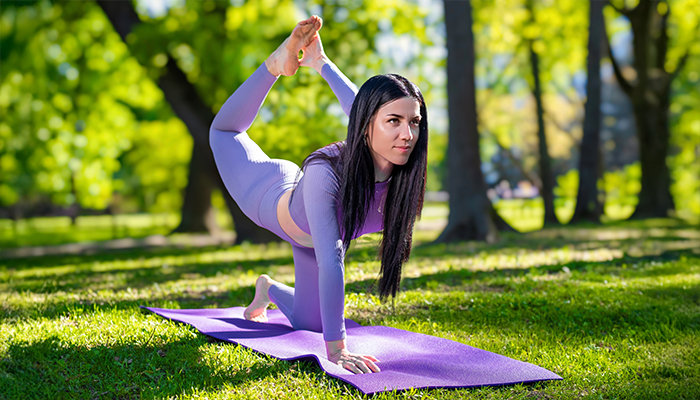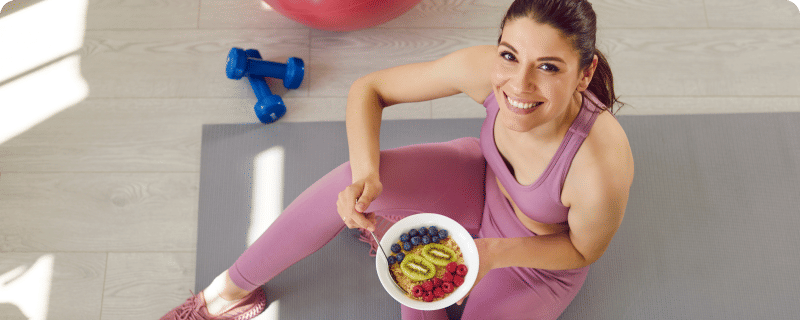Reasons To Do Bridge Exercise Every Day!
Table of Contents
When we talk about simple yet effective exercises, the bridge exercise tops the list. This easy-to-perform move doesn’t need any fancy equipment. You can do it anytime, anywhere – on a yoga mat, your bedroom floor, or even the gym. But what makes the daily bridge exercise so powerful? Let's explore how this move can make a big difference to your overall health.
What Is The Bridge Exercise?
The bridge exercise, also known as the glute bridge exercise, involves lying on your back and lifting your hips while keeping your shoulders and feet on the floor. It may look basic, but it targets several key muscle groups, including the glutes, hamstrings, lower back, and core.
There are many types of bridge movements, like the hip bridge exercise, pelvic bridge exercise, and back bridge exercise. Each version focuses on slightly different muscles, but all bring great results when done daily.
Why You Should Do Bridge Exercise Daily

Including the bridge exercise in your routine every day can help with strength, posture, and even pain relief. Here's why making it a part of your daily movement matters.
Strengthens Your Core
One of the biggest bridge exercises is that they work on your core muscles. A strong core helps with balance, posture, and everyday tasks like bending or lifting things. The core-strengthening bridge can also reduce the risk of injuries.
By lifting your hips and holding the position, your abs work hard to keep you steady. This makes the bodyweight bridge exercise a great way to build inner strength without lifting heavy weights.
Activates Glutes and Hamstrings
The glute bridge exercise is one of the best moves for hamstring and glute activation. If you sit a lot during the day, your glutes may become weak or inactive. This is called “glute amnesia” and can lead to lower back pain or posture issues.
Daily glute bridges wake up these muscles and keep them strong. Your legs feel more stable, and your back gets better support. Over time, you’ll also notice a lift in the shape of your backside – a bonus!
Reduces Lower Back Pain
Many people experience back discomfort due to long hours of sitting or bad posture. The lower back pain bridge exercise can bring relief by strengthening the muscles around the spine.
When you do a floor bridge correctly, it engages the glutes and abs, reducing the load on your lower back. This makes it ideal for people who want a gentle yet powerful way to reduce discomfort.
Improves Hip Mobility
Stiff hips can cause trouble with walking, climbing stairs, or squatting. The hip bridge exercise helps improve hip flexibility by moving your hips through a full range of motion.
Regular practice increases mobility and reduces tightness. This is especially helpful if you are into sports or just want to move more freely during the day.
Builds Better Posture
Good posture isn't just about standing tall – it's about muscle balance. Weak glutes and abs often lead to slouching or arching of the lower back. The bridge exercise corrects this by strengthening muscles that support your spine.
With a stronger base, your body naturally aligns better. Over time, you’ll notice you’re standing taller, feeling lighter, and carrying yourself with more confidence.
Bridge Exercise Variations To Try

Doing the same movement every day can get boring. Luckily, there are plenty of bridge exercise variations to keep things fresh and challenging.
Single-Leg Bridge
Lift one leg off the ground while doing your bridge. This boosts core strength and adds balance training.
Elevated Bridge
Place your feet on a step or low bench. This changes the angle and works your hamstrings even more.
Marching Bridge
While holding the bridge position, lift one knee at a time as if marching. It’s a fun way to test stability and strengthen your core.
Resistance Band Bridge
Place a band around your thighs just above the knees. This adds tension and works the glute muscles even harder.
Trying different versions also helps with bridge exercise progression, which means your muscles keep getting stronger over time.
How To Do A Bridge Exercise: Form Tips
Getting the right bridge exercise form is key. Doing it incorrectly can put pressure on your neck or back. Here's a step-by-step guide:
- Lie flat on your back with knees bent and feet hip-width apart.
- Keep your arms by your sides, palms facing down.
- Tighten your core and squeeze your glutes.
- Slowly lift your hips off the ground until your body forms a straight line from shoulders to knees.
- Hold for a few seconds, then lower your hips back down.
- Bridge exercise form tips:
- Don’t arch your back.
- Keep your knees in line with your hips.
- Breathe out as you lift and breathe in as you lower.
How Many Should You Do?
If you're just starting, begin with 2–3 sets of 10–12 reps. As your strength grows, you can move to more challenging bridge exercise progression options. The good thing about the daily bridge exercise is that it doesn’t take much time – just 5–10 minutes a day can show results in a few weeks.
Who Can Do Bridge Exercises?

The bridge exercise is for everyone – young or old, beginner or advanced. It’s especially helpful for people who:
- Sit for long hours.
- Have weak glutes or back pain.
- Are you recovering from injury.
- Want a no-equipment workout.
- Wish to improve posture and mobility.
It’s also a key move in many fitness routines, including FITFEAST by FITPASS, which offers personalised guidance to help you reach your fitness goals. Whether you train at home or in the gym, FITFEAST by FITPASS ensures your workouts are safe, goal-focused, and enjoyable.
Benefits Of Bridge Exercise In Everyday Life
When you commit to doing a daily bridge exercise, you’ll see positive changes both in your workouts and daily activities. These include:
- Easier movement in daily chores.
- Better control and body awareness.
- Stronger foundation for other exercises like squats or lunges.
- Reduced risk of injuries.
- Feeling more active and energetic.
With continued effort, you’ll not only feel stronger but also move better throughout your day.
Final Thoughts
The bridge exercise is a powerful yet simple movement. It builds strength in your glutes, core, and lower back, improves posture, and helps prevent pain or injury. The best part? You can do it at home with zero equipment.
Start slow, maintain good form, and gradually add in bridge exercise variations for more challenge. Stick with your daily bridge exercise, and soon, you’ll notice a big difference in how you look and feel.
If you’re not sure how to begin or want a personalised plan, consider signing up for FitFeast by FITPASS. Their expert coaches can guide you through every step of your fitness journey, ensuring your workouts are safe and effective.
Can I do bridge exercises every day?
Yes! The bridge exercise is gentle enough to do daily. Just make sure you maintain good form and don’t overdo the reps in the beginning.
Are bridge exercises good for back pain?
Yes, the lower back pain bridge exercise helps strengthen muscles around your spine and reduce discomfort. It’s best to consult a doctor or fitness expert if your pain is severe.
What muscles does the bridge exercise work?
The bridge exercise works your glutes, hamstrings, lower back, and core. It’s especially good for hamstring and glute activation.
Do I need any equipment to do a bridge exercise?
Not at all. The bodyweight bridge exercise needs no equipment. You can use a mat or a soft surface to stay comfortable.


